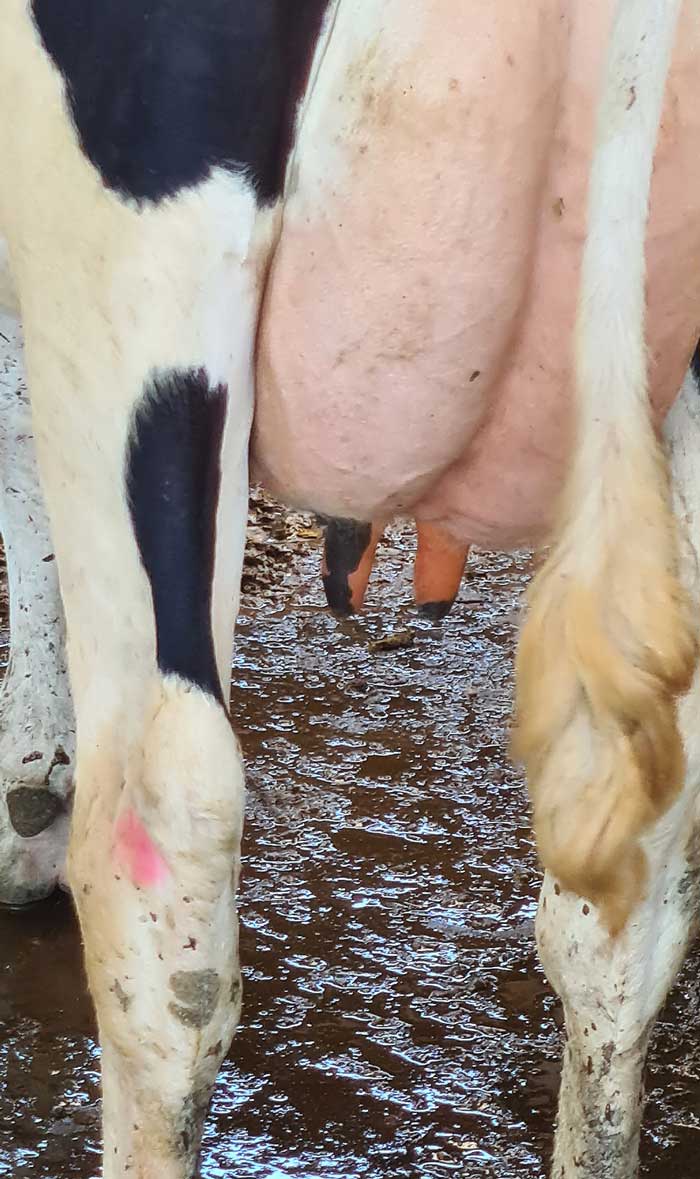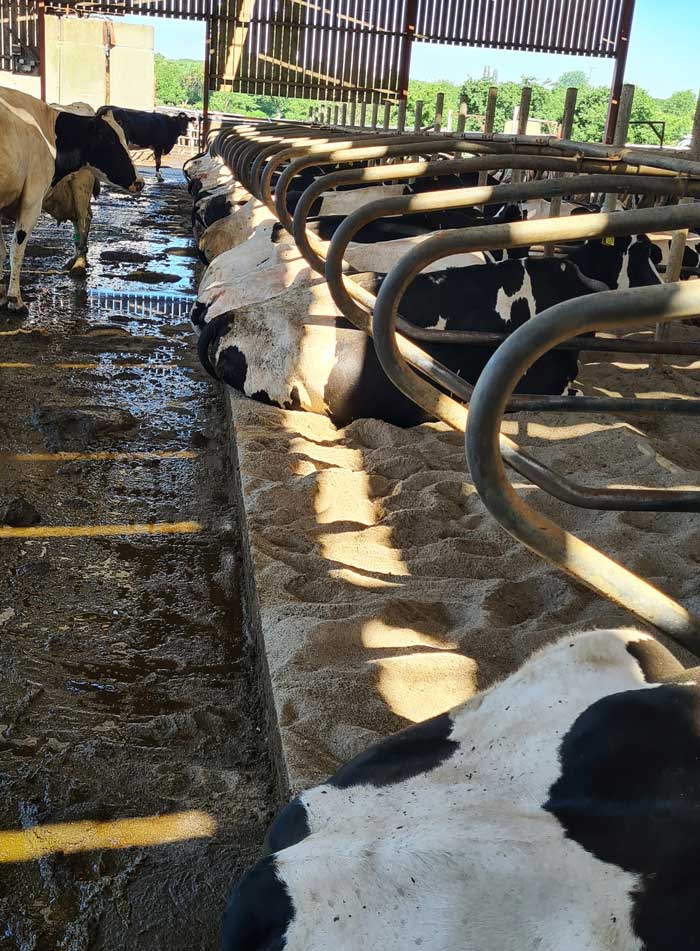22 Sept 2021
Importance of engaging proactively with farmers about mastitis control
Phil Elkins looks at the need for farm vets to be proactive with farmers on controlling mastitis and how they should go about it.

Mastitis remains one of the main areas of potential influence for a dairy practitioner. In particular, when considering the pressure on the industry to ensure responsible prescribing practices, around half of the usage metrics used to assess progress relate purely to intramammary use1.
Despite many years of research and veterinary involvement, many herds still fail to achieve adequate mastitis control. The Agriculture and Horticulture Development Board (AHDB) sentinel herds give us the best opportunity to assess national mastitis rates using reliable data, although a selection bias towards those herds with good record-keeping abilities exists.
Across the four years of sentinel data (2016-19), improvements have been seen in the mean and median rates of clinical mastitis per 100 cows per year, from 38.5 and 35.0 to 29.3 and 26 respectively2,3. However, these figures do not represent the whole picture, with the maximum rate recorded in these sentinel herds remaining around the 100 cases per 100 cows per year.
Despite the continuing requirement for improvements in disease incidence, it is the author’s experience that the veterinary supply to the farm is not always the first port of call by the farmer to aid with udder health, with a plethora of related service providers offering advice. That is not to say that mastitis prevention should be under the sole reserve of the veterinary industry, as some of these alternative providers offer excellent insight and information.
Conversely, through a proactive approach, clinicians can provide valuable advice to our farming clients, either as part of a team with an external advisor, or purely working together with the farmer and farm staff. It may be a case of “if vets don’t get involved in mastitis control, others will”, and so proactivity from clinicians in this area is warranted. Equally, if we do not at the very least know the current mastitis rates, likely causal pathogens/disease patterns, and treatment success rates for both lactating and dry period therapy, can we honestly claim to be prescribing responsibly?
Analysing data
Data analysis should always be the first part of any approach to mastitis control – the likelihood is that most clinicians could identify multiple areas of improvement for optimum udder health conditions; however, it is essential to understand which of these relate to the main issue on farm.
Looking at the rates of clinical mastitis and increased somatic cell count, in both the first 30 days (presumed dry period origin) and further into lactation on a monthly basis, and comparing with industry target rates will allow the clinician to categorise the mastitis pattern according to the following scheme:
- contagious spread
- environmental, dry period origin
- environmental, lactating period origin
The AHDB sentinel herds show that environmental mastitis patterns continue to dominate, with less than 10% of herds affected by clear contagious spread.
Categorising mastitis disease patterns allows investigations and interventions to be appropriately prioritised. However, one area that is often overlooked in texts regarding mastitis is an approach to defining a farm-appropriate expected mastitis rate.
Often the targets discussed are those national targets as derived by population statistics, such as mean, median or 25th percentile. However, each farm is different and inherent factors may be in play on a farm that limit the ability to control mastitis without significant investment. Veterinarians should not shy away from these limitations, but acknowledging them at an early stage will allow appropriate targets to be set.
As an example, a farm with a main shed, with three rows of cubicles to each feed face, and passageways that are 12ft at the feed face and 9ft between rows of cubicles, will have a higher target mastitis rate than one with two rows of cubicles to each feed face, and 18ft and 15ft passageways, all other things being equal.
These points need to be raised and discussed in terms of limiting factors to mastitis control, and targets modified accordingly. Interestingly, the former represents a client of the author, whose current clinical mastitis rate would be in the top 25% of herds nationwide.
The terminology the author uses to communicate this is similar to: “Your current mastitis rate is xx% – I believe the herd can achieve yy% long term, but an appropriate target for the short-term future is zz%.” Communicating the current rate, long-term and short-term aims ensures that expectations are realistic. Formulating those short-term and long-term aims is a moderation of the current rates, national figures, limitations to performance and farmer attitude – the DairyCo Mastitis Control Plan report showed a strong correlation between compliance with advice given and reduction in mastitis parameters4.
Incorporating these factors becomes easier with more experience, and the author would challenge all farm vets, when on farm, to consider what level of mastitis control could be expected on that unit – and then compare it to actual performance.
Comparing the herd mastitis pattern analysis with expected optimum mastitis control will then give the veterinary advisor insight into the scale of the current mastitis control problem, as well as an indication of the area where improvements are likely to be largest. This is an integral step towards working with clients to engage in mastitis control.
Environmental improvement
As already discussed, environmental spread is far more common than contagious spread, with both dry period and lactating period control being implicated in farm-level issues. When investigating environmental mastitis patterns, it is important to remember that cow cleanliness is strongly correlated to bulk tank somatic cell count at a herd level5, and so clean cows must be an aim of any environmental mastitis control plan (Figure 1).

Where cows are not suitably clean, it is important to look at anatomically where they are dirty and where on the farm that contamination is occurring. Equally, the role of the bedding must be considered. These will be considered here separately.
Farms are, by their very nature, at risk of accumulation of faeces. This faeces is often the main source of environmental pathogens. Where this accumulation leads to contamination of lower limbs, which can lead to transfer to the udder when lying; upper limbs, which can transfer directly to the udder; or the udder itself, the risk of environmental mastitis increases.
The best way of identifying this is to spend time looking at the ways the cows are interacting with their environment, and at different times of the day. These can broadly be broken down into different categories:
- bedding areas
- feed areas/passageways
- walking areas
- collecting yards
- exit yards
These are relevant whether animals are housed or at grass.
The parlour hasn’t been considered as if it is the main source of contamination with faecal accumulations, the farm should not be producing milk for human consumption.
Each of these areas should be observed when at their worst – so before scraping/during the end of milking/after milking and with cows in them. This will help identify which area(s) are most responsible for faecal contamination.
The cubicles or bedding if animals are loose housed is there for two reasons – comfort and cleanliness.
If the cows are visibly dirty, and certainly if that contamination is wet, the bedding has not successfully done its job (bearing in mind the level of contamination as previously mentioned). A number of factors should be taken into consideration here: stocking density, bedding quality, bedding quantity and – in particular with regards to cubicles – dimensions.
Often, cubicles have been designed with a number of external influences, including shed size, shed design, current dimension recommendations, cubicle dividers and dealer recommendations, and while many of these are relevant, the key point is how appropriate the cubicles are for the cows on the farm.
A well-designed cubicle will allow cows to lie straight, with appropriate lunge room in front of them, with their rumps just off the edge of the cubicle without tails lying in the passageway.
Figure 2 shows what can be achieved with well-designed cubicles. If this is not the case, a restriction to lying times and increased contamination of cubicles will take place. At this point, observing the cows, and how they choose to stand and lie down, will indicate what the restrictions are to appropriate use.

Are the smaller cows too far into the cubicles? Are the bigger cows too far back? Is enough lunge room available for them to stand up without consideration? Are cubicles present that the cows choose not to use? By spending time watching the cows, they will demonstrate what they don’t like.
The other factor of bedding areas is the bedding itself. When observing cubicles or loose houses immediately after the cows have left for milking, you can observe the quantity and state of bedding remaining. If it is generally wet, or insufficient in quantity, then the bedding quantity and choice should be considered.
Role of parlour
The role of the parlour must also be considered with environmental mastitis patterns – while cleaner cows will have lower bacterial counts at the teat end, teat preparation can further reduce this, and a well-functioning machine can then reduce the impact forces, ensuring any contamination is drawn away from the teat rather than being forced into the teat.
Once we have gone through the aforementioned two stages – data analysis/target setting and environmental assessment – the next stage is to work together with the client to produce an action list. It is essential that this is a team approach.
Telling people what to do rarely works – helping them to work through a problem is far more likely to lead to positive action and, therefore, improved health, welfare and productivity.
A lot of interest has been shown of late in techniques such as motivational interviewing6 to try to effect change on farm, and ultimately our use as veterinary advisors is limited if we cannot help farmers make positive changes to their units. The author would support those techniques as suggested by Morgans – and recently Owen Atkinson – to define our role as facilitators rather than solution-givers.
In other words, we can proactively approach a mastitis control issue, identify causal factors and highlight these to the farmer, but the solutions are more likely to be implemented if they come out of the farmer’s mouth first. We can lead each farmer towards these, and this is a skill that takes time to develop.
The author admits he is not always the best at it, but he can see the benefit when it does happen. So, the challenge is next time you wish to give a farmer a solution, consider whether you could ask an open question to get him or her to come to the same solution.
So, in conclusion, mastitis control remains a large opportunity for veterinary involvement on farm, but we must be proactive as an industry to increase engagement in this area, as other suppliers will do similar. The approach must involve data analysis, as well as setting farm-specific appropriate targets. If the major pattern is environmental, assessing the cows’ relationship with the environment will give clues as to likely areas of concern, and an approach based on facilitating change rather than providing solutions is likely to prove more fruitful.
